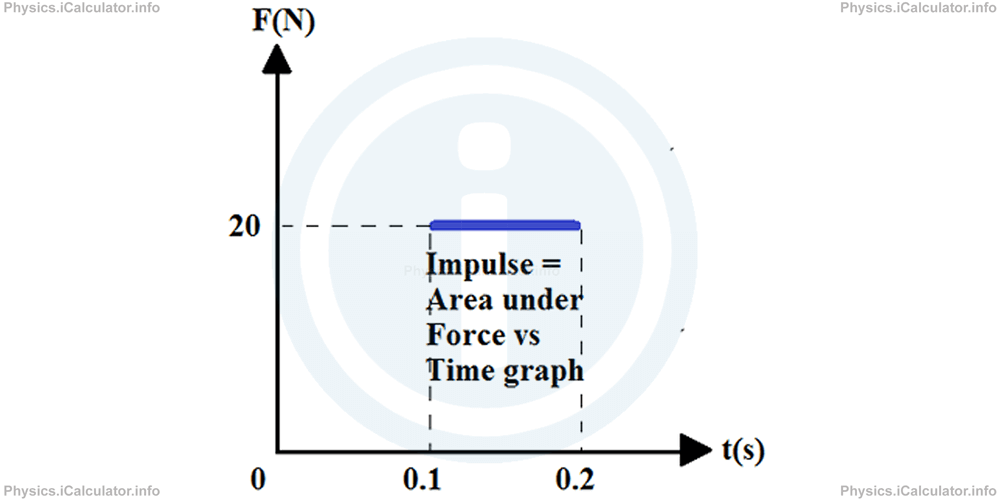Menu
Physics Lesson 6.6.3 - Graphical Representation of Impulse
Please provide a rating, it takes seconds and helps us to keep this resource free for all to use
Welcome to our Physics lesson on Graphical Representation of Impulse, this is the third lesson of our suite of physics lessons covering the topic of Collision and Impulse. Types of Collision, you can find links to the other lessons within this tutorial and access additional physics learning resources below this lesson.
Graphical Representation of Impulse
Since in impulse the impact interval usually is very short, we take the impact force as uniform. Therefore, in the simplified version, impulse is represented by the area under the Force vs Time graph involved. Look at the figure below.

In this case, we have F⃗ = 20 N and Δt = 0.2 s - 0.1 s = 0.1 s. Hence,
You have reached the end of Physics lesson 6.6.3 Graphical Representation of Impulse. There are 4 lessons in this physics tutorial covering Collision and Impulse. Types of Collision, you can access all the lessons from this tutorial below.
More Collision and Impulse. Types of Collision Lessons and Learning Resources
Whats next?
Enjoy the "Graphical Representation of Impulse" physics lesson? People who liked the "Collision and Impulse. Types of Collision lesson found the following resources useful:
- Graphs Feedback. Helps other - Leave a rating for this graphs (see below)
- Centre of Mass and Linear Momentum Physics tutorial: Collision and Impulse. Types of Collision. Read the Collision and Impulse. Types of Collision physics tutorial and build your physics knowledge of Centre of Mass and Linear Momentum
- Centre of Mass and Linear Momentum Revision Notes: Collision and Impulse. Types of Collision. Print the notes so you can revise the key points covered in the physics tutorial for Collision and Impulse. Types of Collision
- Centre of Mass and Linear Momentum Practice Questions: Collision and Impulse. Types of Collision. Test and improve your knowledge of Collision and Impulse. Types of Collision with example questins and answers
- Check your calculations for Centre of Mass and Linear Momentum questions with our excellent Centre of Mass and Linear Momentum calculators which contain full equations and calculations clearly displayed line by line. See the Centre of Mass and Linear Momentum Calculators by iCalculator™ below.
- Continuing learning centre of mass and linear momentum - read our next physics tutorial: Law of Conservation of Momentum and Kinetic Energy
Help others Learning Physics just like you
Please provide a rating, it takes seconds and helps us to keep this resource free for all to use
We hope you found this Physics lesson "Collision and Impulse. Types of Collision" useful. If you did it would be great if you could spare the time to rate this physics lesson (simply click on the number of stars that match your assessment of this physics learning aide) and/or share on social media, this helps us identify popular tutorials and calculators and expand our free learning resources to support our users around the world have free access to expand their knowledge of physics and other disciplines.